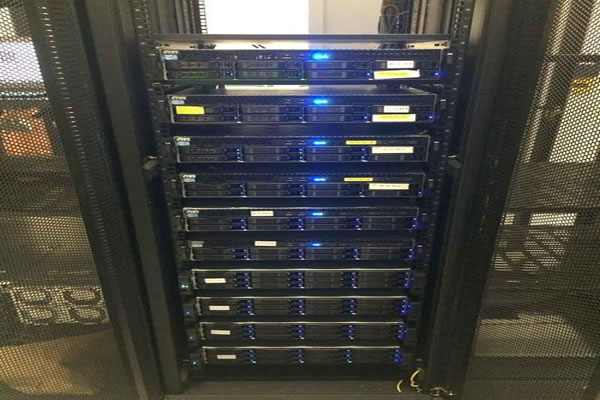
In today's Internet age, server performance directly affects the access speed and user experience of the website. For those businesses or individual users who use U.S. servers, how to optimize resource configuration with only one server is a crucial issue. This article will provide you with some practical strategies to help you maximize your limited server resources.
Evaluate the current resource usage of the server
First, you need to conduct a comprehensive assessment of the current resource usage of the server. This includes CPU, memory, storage and bandwidth. Through monitoring tools, you can view the utilization rate of each resource in real time and identify which parts have bottlenecks. This process not only helps you understand the performance status of the server, but also provides a basis for subsequent optimization measures.
Optimize website code and database
In resource configuration optimization, website code and database optimization is an important link that cannot be ignored. Make sure your code is concise and efficient, avoiding redundant and unnecessary features. For databases, access efficiency can be improved through indexing, query optimization, etc. In addition, regularly cleaning useless data records can also effectively reduce the burden on the database.
Using caching technology
Caching technology can significantly increase website response speed and reduce server load. By storing commonly used data or pages in the cache, users can directly obtain information from the cache when accessing, without having to request the server every time. Common caching techniques include memory cache (such as Redis, Memcached) and CDN cache. Properly configuring these cache technologies can effectively improve the performance of the server.
Properly configure server software
The configuration of server software also has an important impact on resource utilization efficiency. Make sure that the server software you use (such as Nginx, Apache, etc.) is properly configured to make full use of the server's hardware resources. For different usage scenarios, you can adjust the software's parameter settings to improve performance. At the same time, it is also crucial to keep server software and operating systems updated, which can fix known vulnerabilities and performance issues.
Monitor and analyze performance data
Optimizing resource allocation is not a one-time job, but a continuous process. By regularly monitoring and analyzing server performance data, you can promptly identify potential problems and make corresponding adjustments. Use professional monitoring tools to help you understand the server's running status in real time and generate detailed reports for in-depth analysis.
Consider load balancing and scaling solutions
Although there is only one server at present, as the number of visits increases, you may want to consider load balancing and scaling solutions. Load balancing can allocate requests to multiple servers, thereby improving website availability and response speed. In addition, the elastic expansion function provided by cloud services can help you dynamically adjust resource configuration according to actual needs to avoid resource waste.
Strengthen safety measures
Security is also an important aspect that needs to be considered when optimizing resource allocation. Ensure the security configuration of the server, prevent malicious attacks and data leakage, and effectively avoid resource waste caused by security issues. Regular updates to security patches, use of firewalls and intrusion detection systems, etc. can enhance the security of the server and ensure that resources are reasonably utilized.
Summary and suggestions
With only one US server , optimizing resource configuration is the key to improving website performance. By evaluating current resource usage, optimizing code and databases, applying caching technology, configuring server software reasonably, monitoring performance data, and considering scaling solutions, you can effectively improve server performance and stability. Regular resource review and optimization are recommended to ensure that the server is always in the best condition, thus providing a better experience for users.
- Latest articles
- Learn How Malaysia’s Dynamic Dial-up Server Works
- Tips And Suggestions You Must Read Before Buying A Cloud Server In Malaysia
- Performance And User Feedback Of Hengchuang Vps In The Hong Kong Market
- Yinchuan Enterprises Choose The Best Solution For Server Hosting In Hong Kong
- Complete Steps To Build Vpn Using Alibaba Cloud Us Servers
- Cambodia Dynamic Vps Usage Experience And Evaluation
- Is The Us High-defense Server Good? Real User Evaluation Analysis
- Key Factors For Choosing Hong Kong Ai Server Supplier
- Choose Malaysia Cn2 Gia Services To Enhance Your Online Experience
- How To Choose The Right Us Hosting Server And Its Cost
- Popular tags
-
How Many IPs Are Generally Needed For An Effective Operation Of A US Server Cluster?
This article explores the number of IP addresses required for the effective operation of a US-based website cluster and provides professional advice to help understand the construction and optimization of a website cluster. -
Several Key Factors To Pay Attention To When Choosing A Us High-defense Server
when choosing a us high-defense server, you need to pay attention to a number of key factors, including security, performance, technical support, etc. this article will introduce these elements to you in detail. -
Us Server Hosting Cost Analysis And Frequently Asked Questions
this article analyzes server hosting costs and common questions in the united states to help you better choose a suitable server hosting service.


